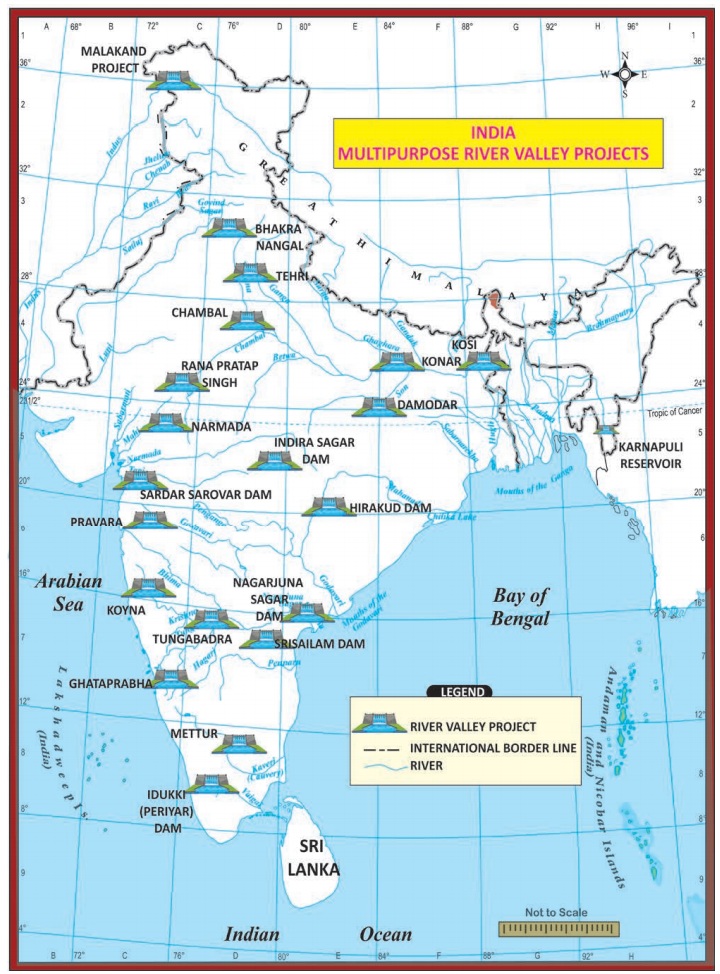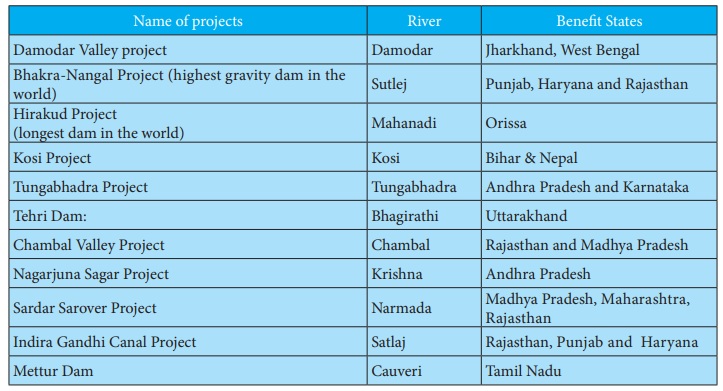Chapter: 10th Social Science : Geography : Chapter 3 : India - Agriculture
Sources of Irrigation in India
Irrigation
Watering
of agricultural plants through artificial means is called irrigation. Being a
hot country with seasonal and irregular rainfall, it always needs irrigation to
carry out agricultural activities during dry period.
Sources of Irrigation
In India,
different sources of irrigation are used depending upon the topography, soils,
rainfall, availability of surface or groundwater, nature of river (whether
perennial or non-perennial), requirements of crops etc. The main sources of
irrigation used in different parts of the country are
• Canal
irrigation
• Well
irrigation and
• Tank irrigation

a) Canal Irrigation
It is the
second most important source of irrigation in our country.
Canals
are the effective source of irrigation in areas of low level relief, deep,
fertile soils, perennial source of water and extensive command area. The canals
are of two types:
1. Inundation
Canals: In this, water is taken out
directly from the rivers without making any kind of barrage or dam. Such canals
are useful for the diversion of flood water from the rivers and remain
operational during rainy season.
2. Perennial
Canals: These are developed from
perennial rivers by constructing barrage to regulate the flow of water. About
60 percent of the canal irrigated area falls in the northern plains of India,
b) Well Irrigation
A well is
a hole or trough, usually vertical, excavated in the earth for bringing
groundwater to the surface. Well irrigation is the most important source of
irrigation. It is a cheap, dependable, and popular source of irrigation in the
country. Well irrigation is unavoidable in the region of low rainfall and
becomes an essential one where the canals and tank irrigation are not
available. Wells are of two types:
i) Open wells
ii) Tube wells
1. Open
Wells: This type of irrigation is
widely practiced in the areas where groundwater is sufficiently available. The
areas are in Ganga Plains, the deltaic region of Mahanadi, Godavari, Krishna,
Cauvery and parts of Narmada and Tapti valleys.
2. Tube
Wells: Tube wells are developed in the areas
of low water table, sufficient power supply and soft subsurface geological
units. Tube wells are predominant in the states of Gujarat, Maharashtra,
Punjab, Madhya Pradesh and Tamil Nadu.
c) Tank Irrigation
A tank is
a natural or man-made hollow on the surface developed by constructing a small
bund around it across a stream. It is used to collect and store water for
irrigation and other purposes. Irrigation by tanks is a very old system in
India. It also includes irrigation from lakes and ponds.
The tank
irrigation is popular in the peninsular India due to the following reasons:
1. The
undulating relief and hard rocks make difficult to dig canals and wells.
2. Natural
depressions serve as reservoirs.
3. Absence
of perennial rivers.
4. Impermeable
rock structure which do not permit percolation.
5. The scattered nature of population and
agricultural fields
Modern irrigation methods
There are
many ways in Modern Irrigation. Among them mostly practiced in India are drip
irrigation, sprinklers and Rain Gun and central pivot irrigation
Drip Irrigation Method
It was
first developed. In this method, water is supplied in the form of drops through
nassals. water can be saved upto 70%.
Springler Method
It is the
simplest and easiest method of all. In this method, water is supplied to the
field from the source through the pipes with have small holes. It can be used
in the areas of uneven surface also.
Rain Gun
Rain gun is used to spread water like rain. It can
be used to water the crops which grow upto 4 feet. It is useful to irrigate the
crops like sugarcane and maize.
Central - Pivot Irrigation
It is also called water wheel and circle
irrigation. It is a method of crop irrigation in which equipment roatates
around a pivot and crops are watered with springlers.
Multipurpose River Valley Projects
It is a scientific management of water resources in
our country. Construction of dam across rivers is aimed at many purposes.
Hence, it is termed as multi-purpose river valley projects. The various
purposes of a dam serves are irrigation, hydro power generation, water supply
for drinking and industrial purpose, controlling floods, development of
fisheries, navigation etc. Generally, majority of multipurpose projects are
combination of irrigation and hydro-power which are the major aims of the
projects.
Pradhan Mantri Krishi Sinchayee Yojana (PMKSY)
This has been implemented to get more
production by using water saving and conservation technologies.


Related Topics